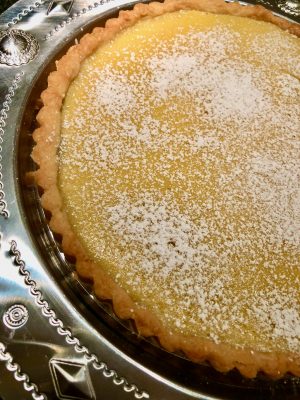 It may not be the best time in our lives…but it’s still a great time to bake.
It may not be the best time in our lives…but it’s still a great time to bake.
We’ve noticed there’s more baking going on than usual. And why not? We not only have the time while we self-quarantine, we also have the need to lift our spirits and enjoy the simple pleasure of home baking. Andrew, who does all the baking in our house, never bakes in the city. Then he recognized how much he missed it. So he looked for a simple recipe to share with you. He chose one that we’re almost sure you won’t have to leave the house to buy a single thing. The main ingredients are Dark Brown Sugar, Egg Yolks and Heavy Cream and, of course, All-Purpose Flour for the tart shell. I can’t overstate how good this is. An oh-so-buttery crust has a molten brown sugar bottom which is topped with custard. Blended together in each bite, it’s a perfect combination of rich, creamy indulgence. And the one other thing today’s Brown Sugar Tart also did was take me back to Canada. Because this tart was inspired by Tarte au Sucre Francaise or French-Canadian Sugar Tart, the stuff of dreams of my childhood.
You likely have every ingredient you need right in your pantry.
I never knew the origins of this childhood favorite. Christopher Kimball’s Milk Street Cookbook (Little Brown 2017), where Andrew found the recipe, provided an intriguing “sound bite”. “The inspiration for this simple yet rich tart was a French-Canadian sugar pie that originated in Waterloo, the Belgian town that was the site of Napoleon Bonaparte’s 1815 defeat.” Since there’s some downtime in making the tart while the pastry chills, I thought I could find more about this revelation. What I found was that Milk Street was almost certainly dead wrong about Waterloo, Napoleon and any connection to French Canadian Sugar Tarts.
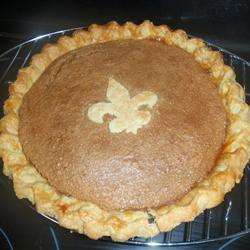
A brief history of a treat treasured by all Quebecois.
To explain, all of us Quebecois, whether French or English, Tarte au Sucre is arguably our most beloved dish. You will find them everywhere from the greasiest of spoons to traditional restaurants to the kitchen of your grand-mere. There are variations that allow nuts and there are even some that have double crusts. But for Quebecois, the best sugar pie is the one he or she ate at home as a child. And if you ask where the pie came from, you have to know a little French-Canadian history.
French-Canadians brought most of their culinary traditions from their homeland.
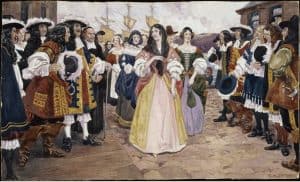
Nearly every French Canadian came from the west of France and brought their culinary traditions with them. The wave of immigrants from France started as a trickle after New France was named by Jacques Cartier in 1534. New France remained in French hands until 1763 when the British signed the Treaty of Paris. 60,000 Quebecois became British subjects overnight. That virtually stopped all immigration from France. So much for Waterloo, 1815 and Napoleon Bonaparte. The sugar pie, using white sugar, was found in old cookbooks from Normandy and Poitou, both places that sent many immigrants to New France. Cane sugar was scarce in France and so the sugar was augmented by quantities of flour. New France traded with the West Indies, importing brown sugar and molasses in exchange for grain. However, the nearest Maple tree also provided a reliable source of sugar. This introduced Maple Sugar Pie. But it never had the traction of the ubiquitous plain Tarte au sucre. Now on to our glorious recipe.
Ready, Set, Go!
Before starting out, read through the recipe and gather all your ingredients, prep them and get ready to go. When you are ready to roll out the crust, make sure it has properly chilled for at least one hour. If it’s been in the refrigerator for more than an hour, let it sit out on the kitchen counter for 10 minutes before rolling it out. If you don’t have the pie weights for the ‘blind-baked’ pastry shell, you can press those dried beans you bought in quantity into service.
Brown Sugar Tart
A glorious rich brown sugar confection with a sweet custard on top of a layer of brown sugar and flay
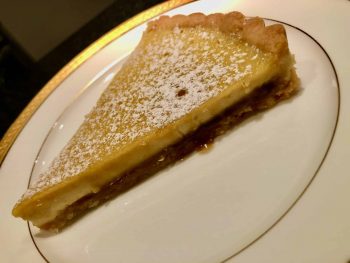
Ingredients
- For the Pie Crust
- 3 Tablespoons water
- 2 teaspoons cornstarch
- 1 cup plus 2 Tablespoons all-purpose flour
- 2 teaspoons sugar
- 1/4 teaspoon kosher salt
- 10 Tablespoons salted butter, cut into 1/2″ pieces and kept cold
- 2 Tablespoons sour cream
- For the Brown Sugar Tart filling:
- 8 Tablespoons of packed dark brown sugar
- 1 Tablespoon all-purpose flour
- 1/8 teaspoon kosher salt
- 4 large egg yolks
- 1 1/4 cups heavy cream
- 2 teaspoons vanilla extract
Directions
- Step 1 To make the pie dough:
- Step 2 Whisk water and cornstarch together in a small bowl. Then microwave until set, about 30-40 seconds, stirring halfway through. Chill in your freezer for 10 minutes.
- Step 3 After the cornstarch mixture has chilled, combine flour, sugar and salt and process until mixed in a food processor, about 5 seconds. Add the chilled corn-starch mixture and pulse until consistently ground, about 5 pulses. Add the butter and sour cream and process until the dough comes together and begins to collect around the blade, about 20-30 seconds. Pat the dough into a 4″ disk, wrap in plastic wrap and refrigerate for at least one hour and up to 48 hours (or if you want to make the pie right away freeze for 15 minutes).
- Step 4 Roll out and blind bake the pie crust:
- Step 5 Heat oven to 375 degrees F, with oven rack in the middle. Flour your counter and roll dough into a 12″ circle.
- Step 6 Hang dough over the rolling pin and transfer to a 9″ tart pan, making sure it is properly centered. Push the sides of the dough into the edges and sides of the pan, then use your rolling pin to roll off the excess dough that hangs over the side of the pan.
- Step 7 If you’ve been working with your dough for a while and it’ starting to soften or get tacky through it back in the fridge for a bit to make sure it is chilled. Then line the shell with foil and fill with pie weights or dried beans.
- Step 8 Bake until the edges of the crust are light golden brown, about 25 minutes, making sure to rotate the plan about half-way through.
- Step 9 Remove the weights and foil and continue to bake until the bottom of the shell begins to show color, about another 5-7 minutes.
- Step 10 Let cool on a wire rack for 1 hour before filling.
- Step 11 If you decide to bake the crust in advance (good for you!) it can be wrapped in plastic wrap and kept at room temperature for up to 48 hours.
- Step 12 To make the filling:
- Step 13 Set oven racks in middle and lower positions, preheat to 325 degrees F.
- Step 14 Combine 2 Tablespoons of dark brown sugar with the flour and salt in a medium bowl. Add the yolks, whisk until combined. Add cream and vanilla and whisk until smooth. Sprinkle the remaining 6 Tablespoons of dark brown sugar over the warm crust and gently press into an even layer.
- Step 15 Slowly pour the custard over the dark brown sugar.
- Step 16 To Bake:
- Step 17 Bake on your oven’s middle rack until the edges are set but the center jiggles a bit, about 25 minutes. Cool in the pan on a wire rack for at least an hour.
- Step 18 Remove the outer metal ring and serve at room temperature.
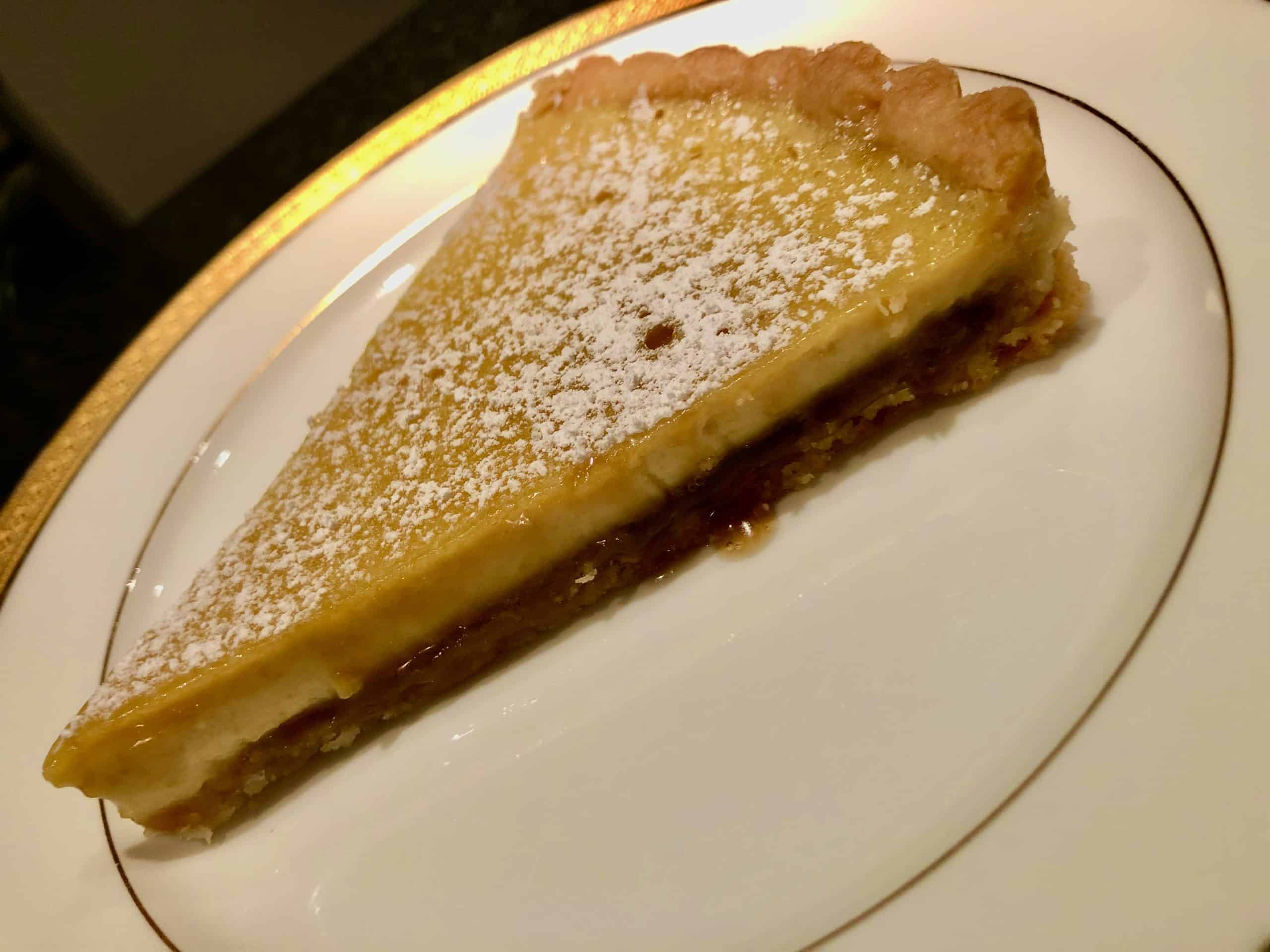
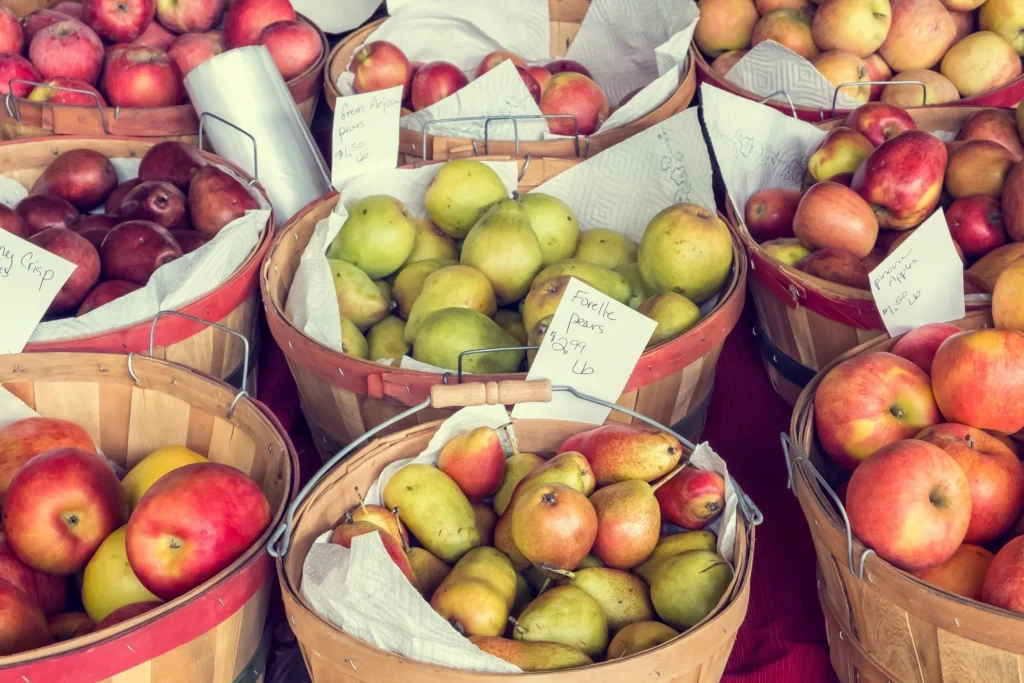
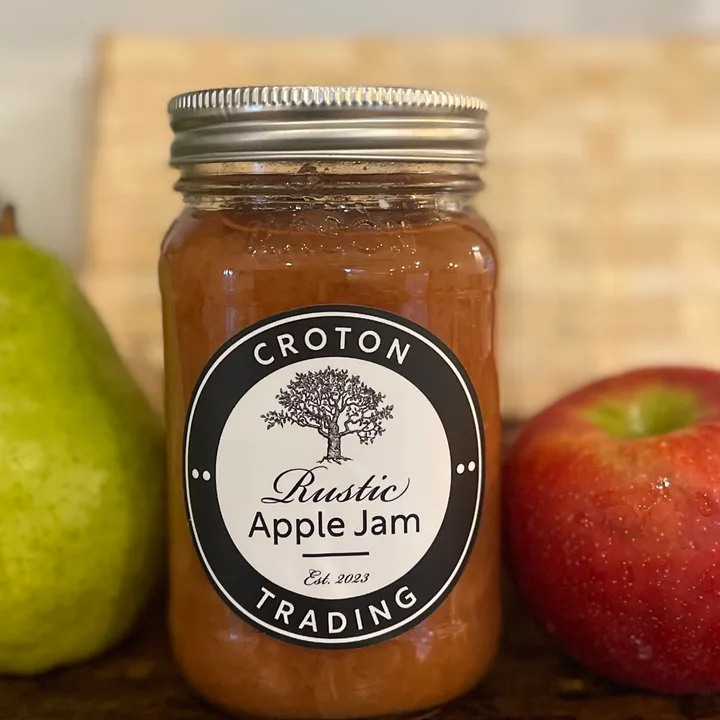
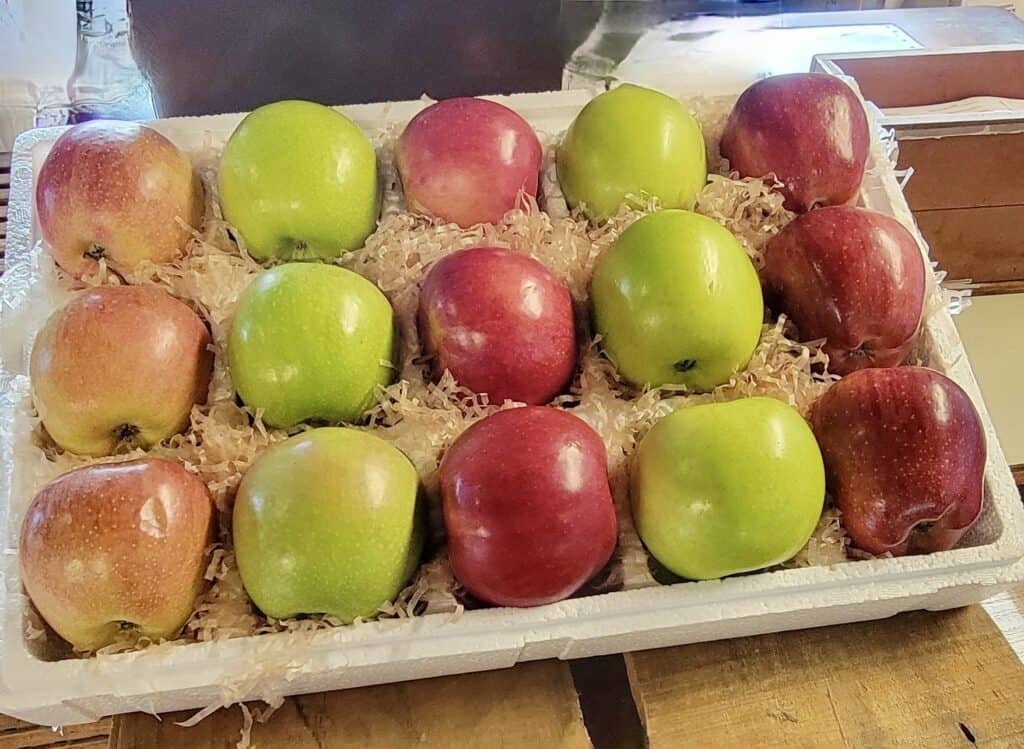
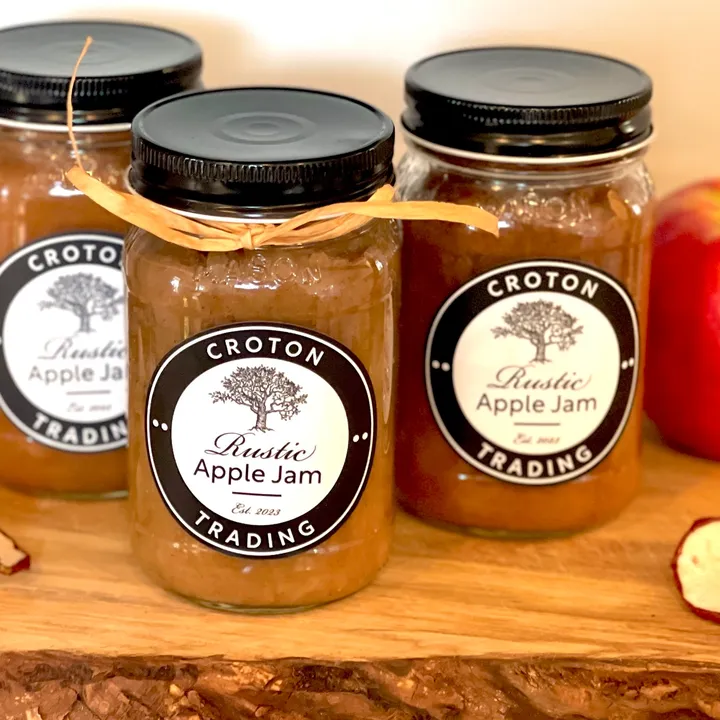
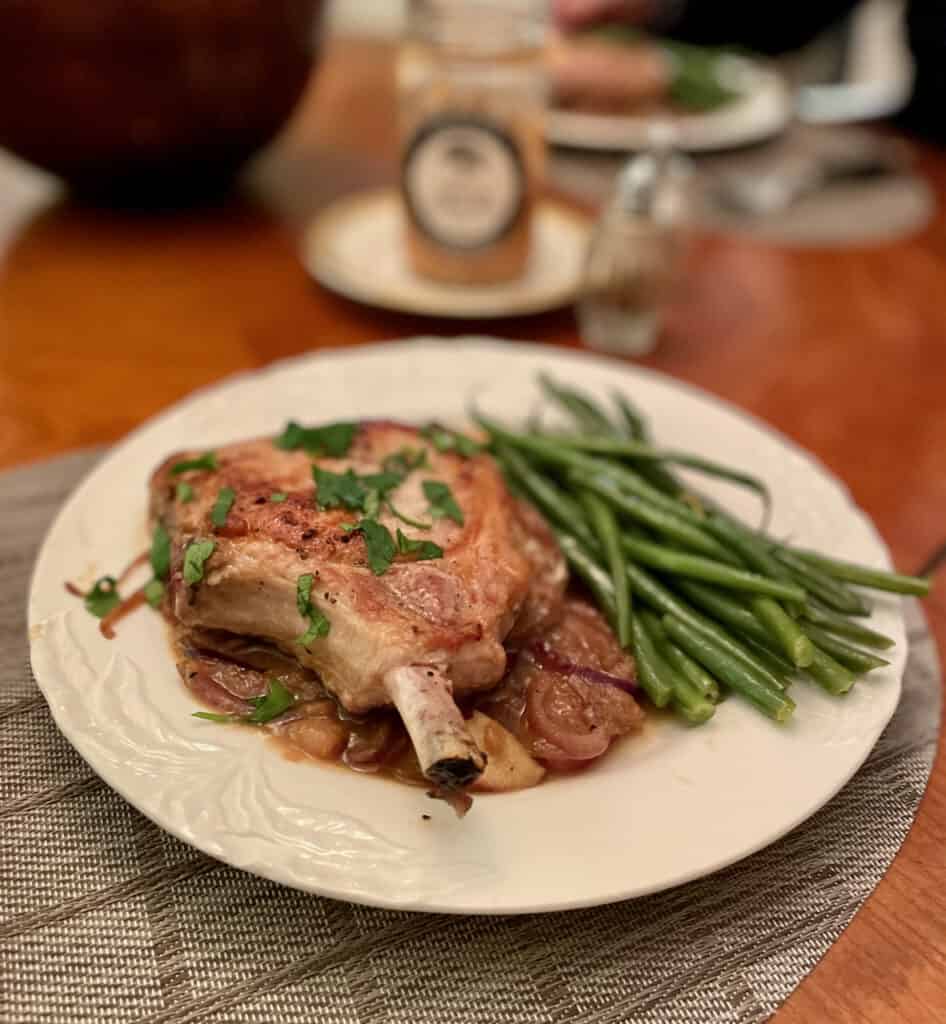






If I don’t have a microwave, what alternative would you propose to set the water and cornstarch for the pie crust?
Dear Sandy, While I have not done this myself, it seems to me that if you used boiling water stirred into the cornstarch, it might approximate the heat of a microwave. Afterall you are then putting the mixture into a freezer so I would think it would work. Let us know if it does, please!